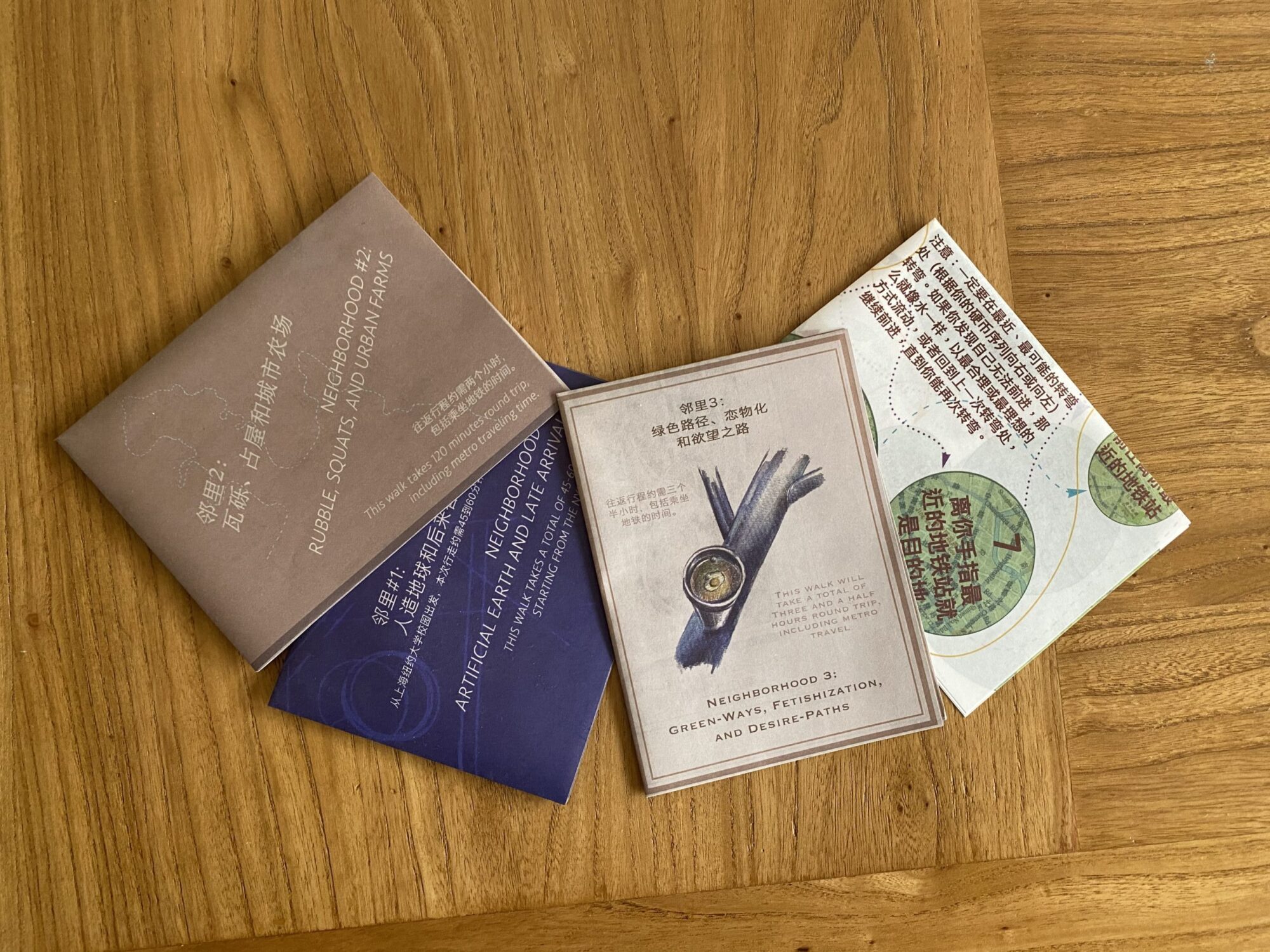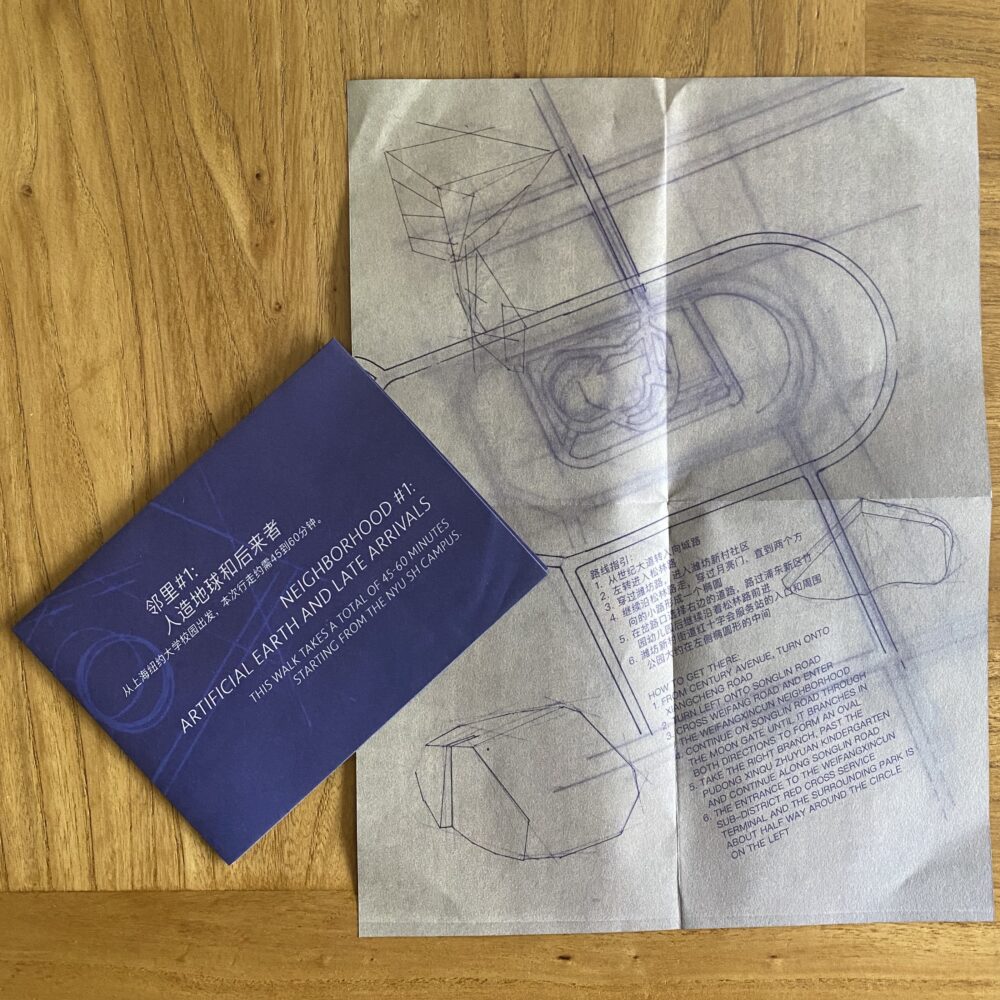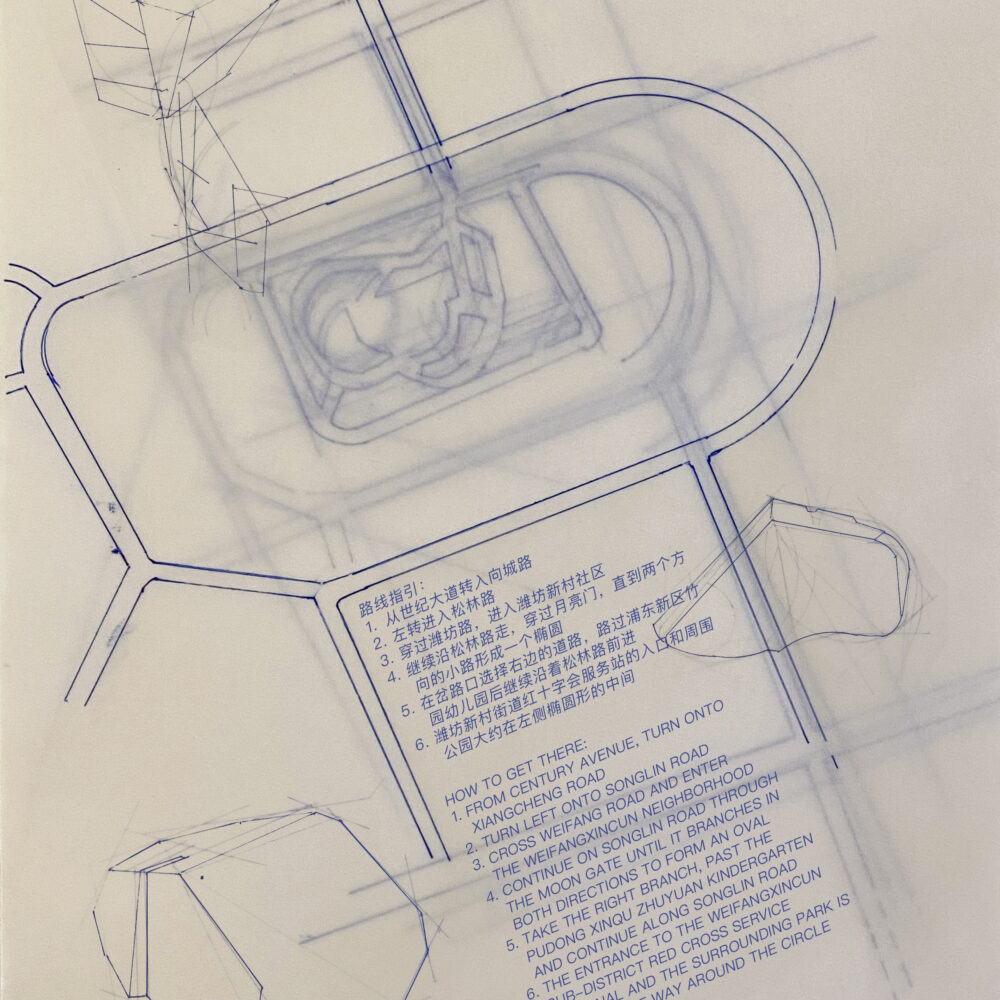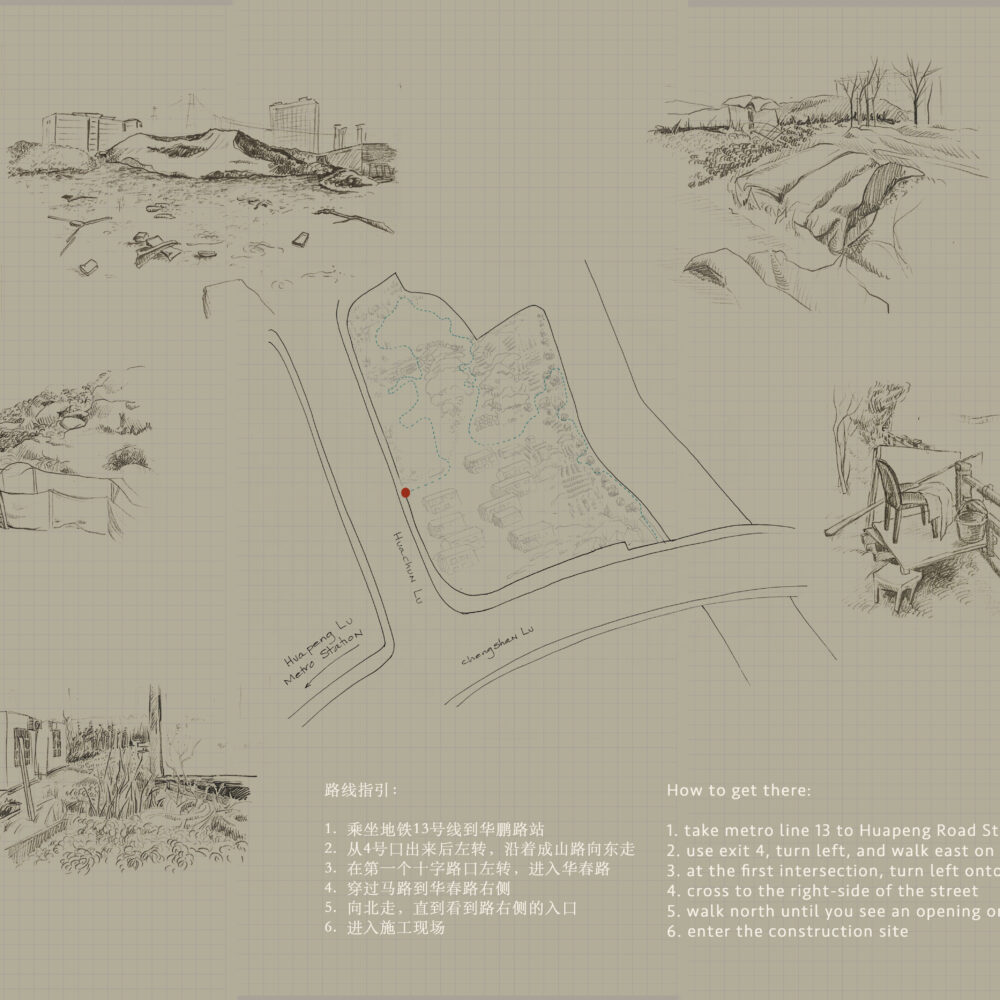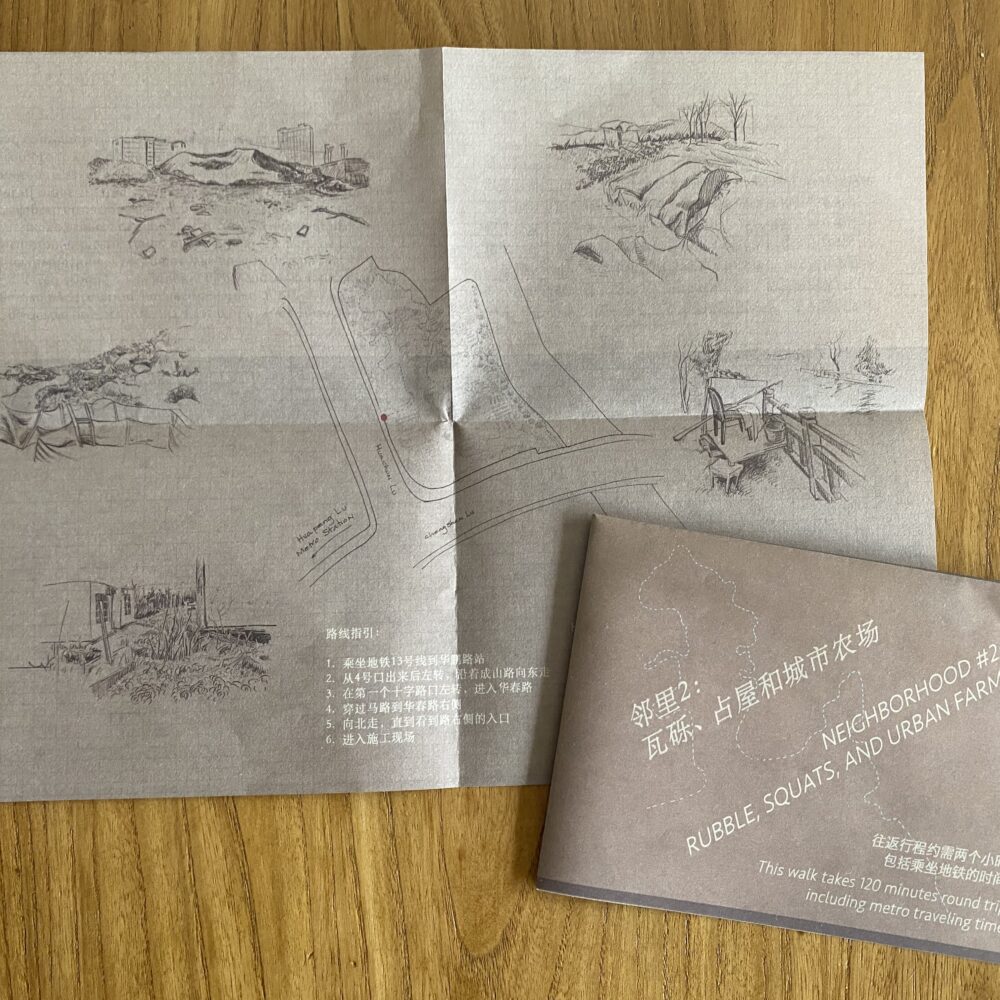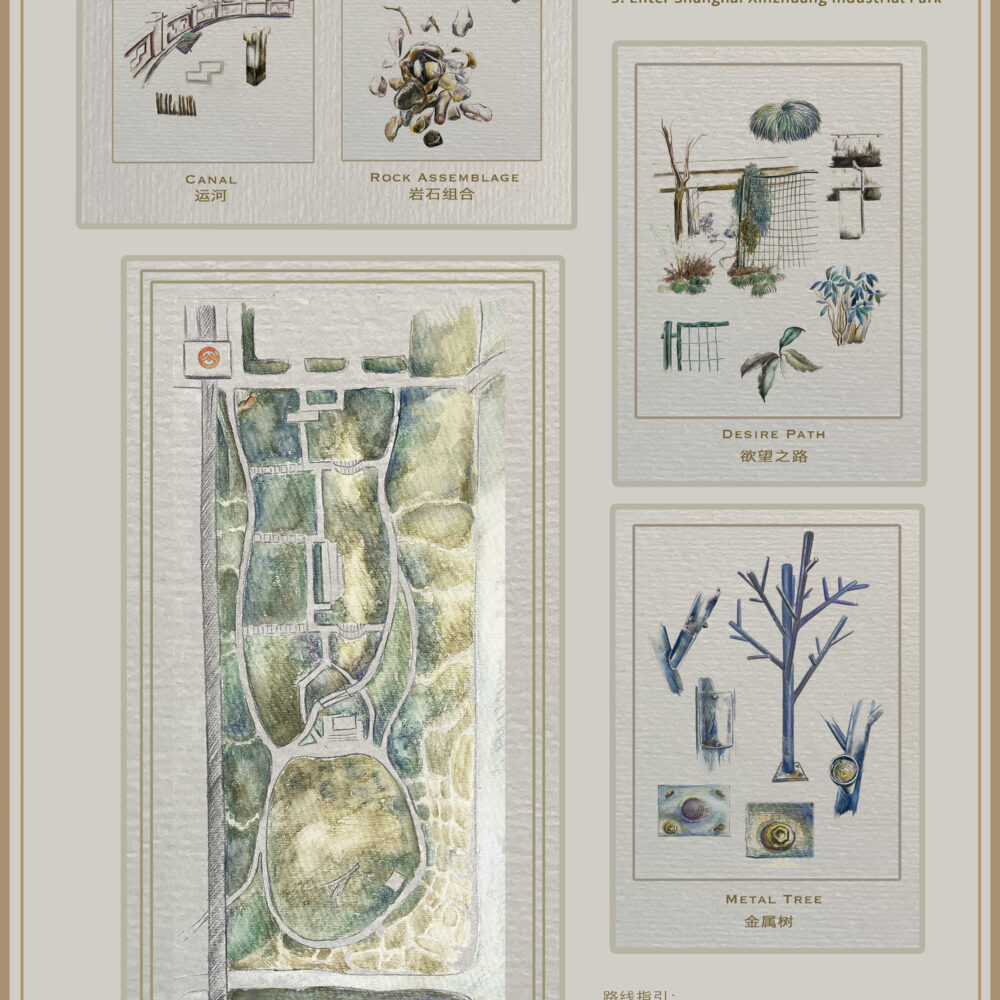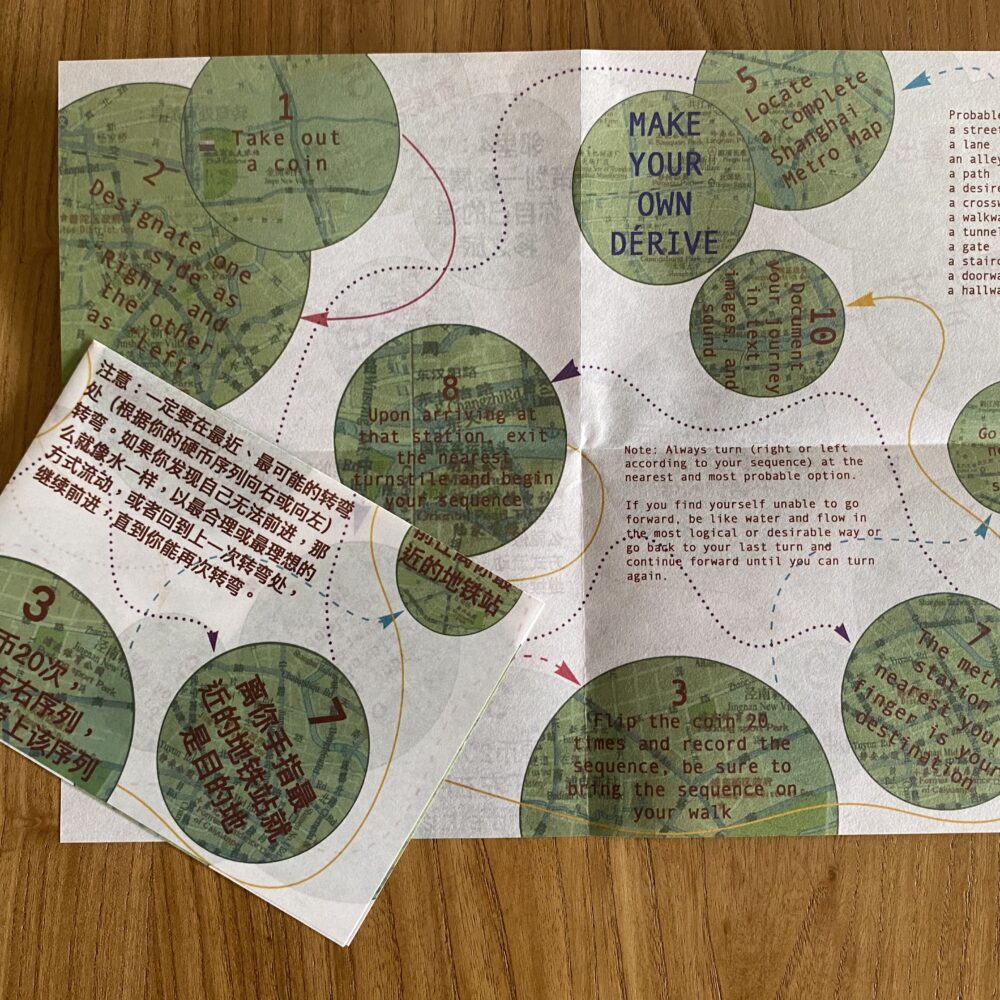Neighborhoods, a set of maps created through chance-based algorithmic walks, seeks to open a dialogue towards the decolonization of human and non-human animals, objects and geographies.
The dérive (or “drifting”) is a form of moving through space as guided by attraction and desire instead of pre-set programing. Centered around an awareness of psychogeographical effects, this technique was created by Guy Debord in 1956 to challenge aspects of capitalist society by engineering disrupted situations in which to reflect. Neighborhoods, a set of maps created through chance-based algorythmic walks, seeks to open a dialogue towards the decolonization of human and non-human animals, objects and geographies. Visitors are invited to take the maps and visit the locations. Included are prompts to encourage embodied exploration of the various sites and open up dialogue regarding “nature”.
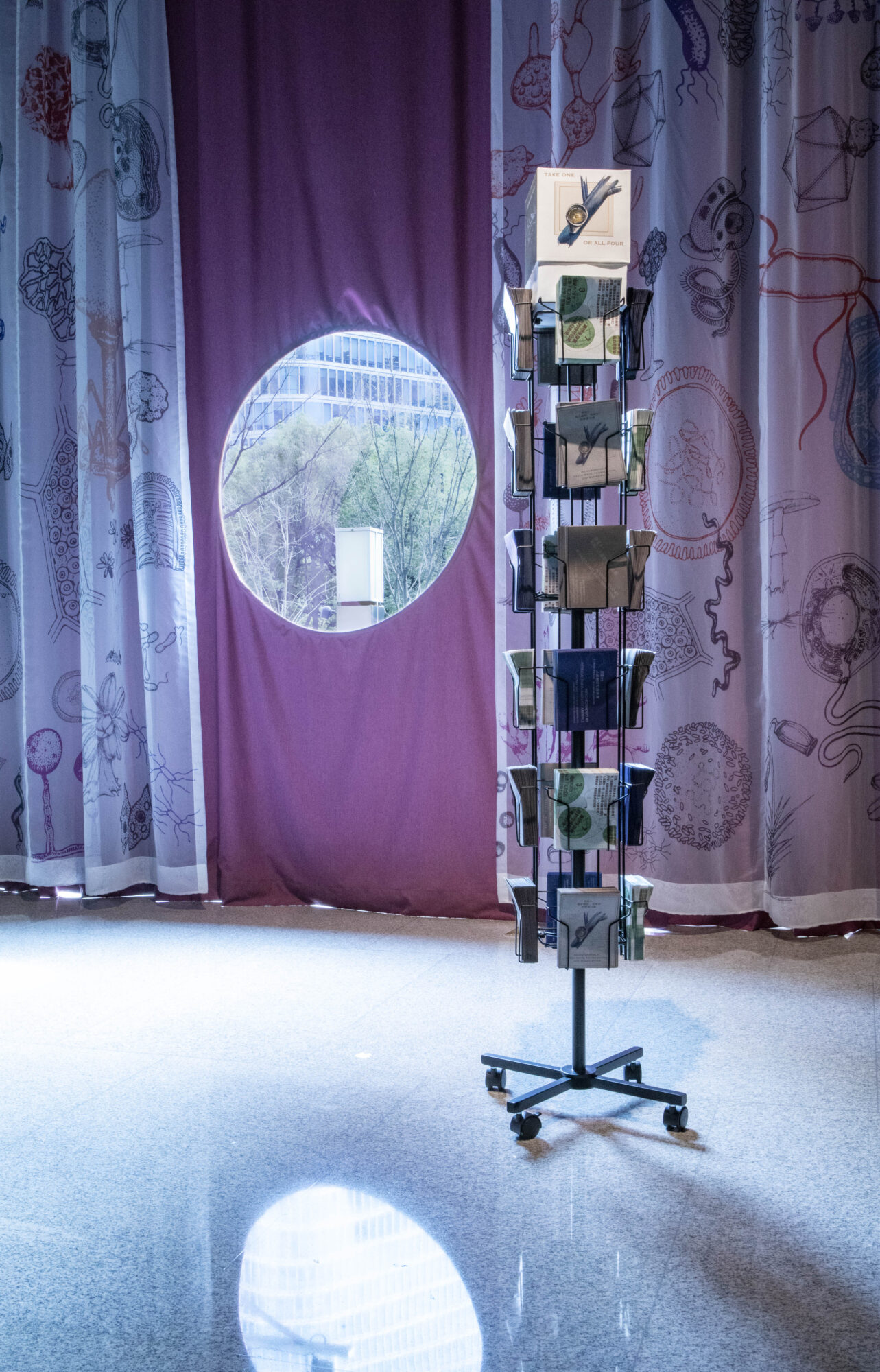
Installation View, Institute of Contemporary Art, NYU Shanghai, metal postcard rack, printed maps.
All Maps: graphite, pen, and watercolor on paper, digitally manipulated drawing printed on waxed newsprint. 21 x 29.7cm each.
